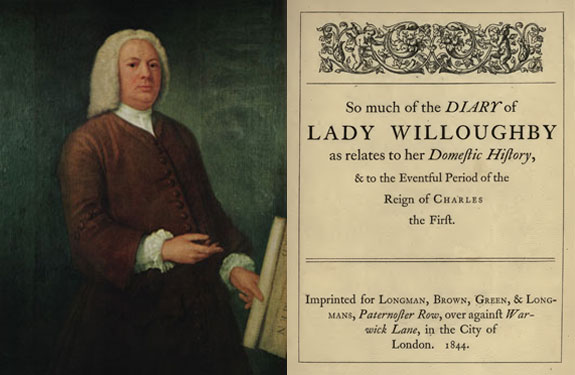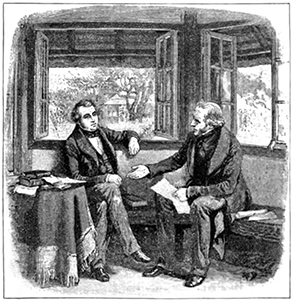January 15
“The Charles Whittinghams, Uncle and Nephew, were creditors of our age, or at least, of those among us who confess a liking for comely books. There is a real debt of thankfulness still owing them, and a considerable balance of it will be carried forward to the account of generations which are yet to come trooping along with Time.” So stated the biographer of the Charles Whittinghams, printers, the elder of whom died on this day
Charles Whittingham the elder, founder of the great Chiswick Press, which contributed almost a century of service to the printer’s craft, was indentured at eleven years of age to Richard Bird of Coventry in 1779. At a very early age he must have succumbed to the love of books, as his name appears on the subscription lists of London booksellers before he had completed his apprenticeship. Just as soon as he had obtained his freedom at the age of nineteen, he journeyed to London.
Some three years later he had borrowed a sufficient sum of money to enable him to set up a press in a garret and to offer his services as a master printer. At first Whittingham was his own compositor, pressman, and all around workman, but within another three years he was printing specimen books for the great typefounding firm of William Caslon. No doubt upon the strength of being Caslon’s printer, Whittingham soon had all the work he could handle for the various publishers and booksellers of the time. He expanded into a second shop, and then into a third. He decided also to do his own publishing, which of course brought the wrath of his customers down upon his head. Apparently this did not bother him. His own books were small at a time when most publishers requested large-size volumes. Whittingham began to issue standard authors in sets, an immensely successful undertaking.
As his business prospered, the printer kept abreast of all the technical developments of the trade. He bought the first improved press manufactured to Lord Stanhope’s pattern. He became the outstanding printer of wood engravings, devising a system of makeready then unknown to his rival printers.
In 1828 Charles the younger made an arrangement with Charles Pickering, the publisher, to print one of his books. From 1830 the two men combined in a most notable achievement in English printing history, producing books at a consistently high level. The publication in 1844 of The Diary of Lady Willoughby revived the use of Caslon types after almost sixty years of decline following the introduction of the modern roman types by Bodoni and the Didots. Caslon has maintained its popularity since that time. The younger Charles Whittingham, as a printer, contributed in no small way to the great success of the Pickering imprints.

